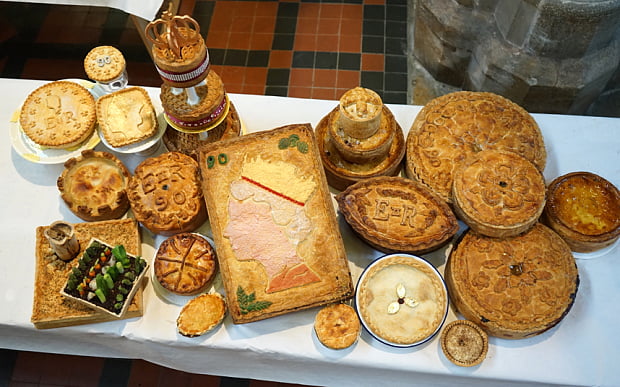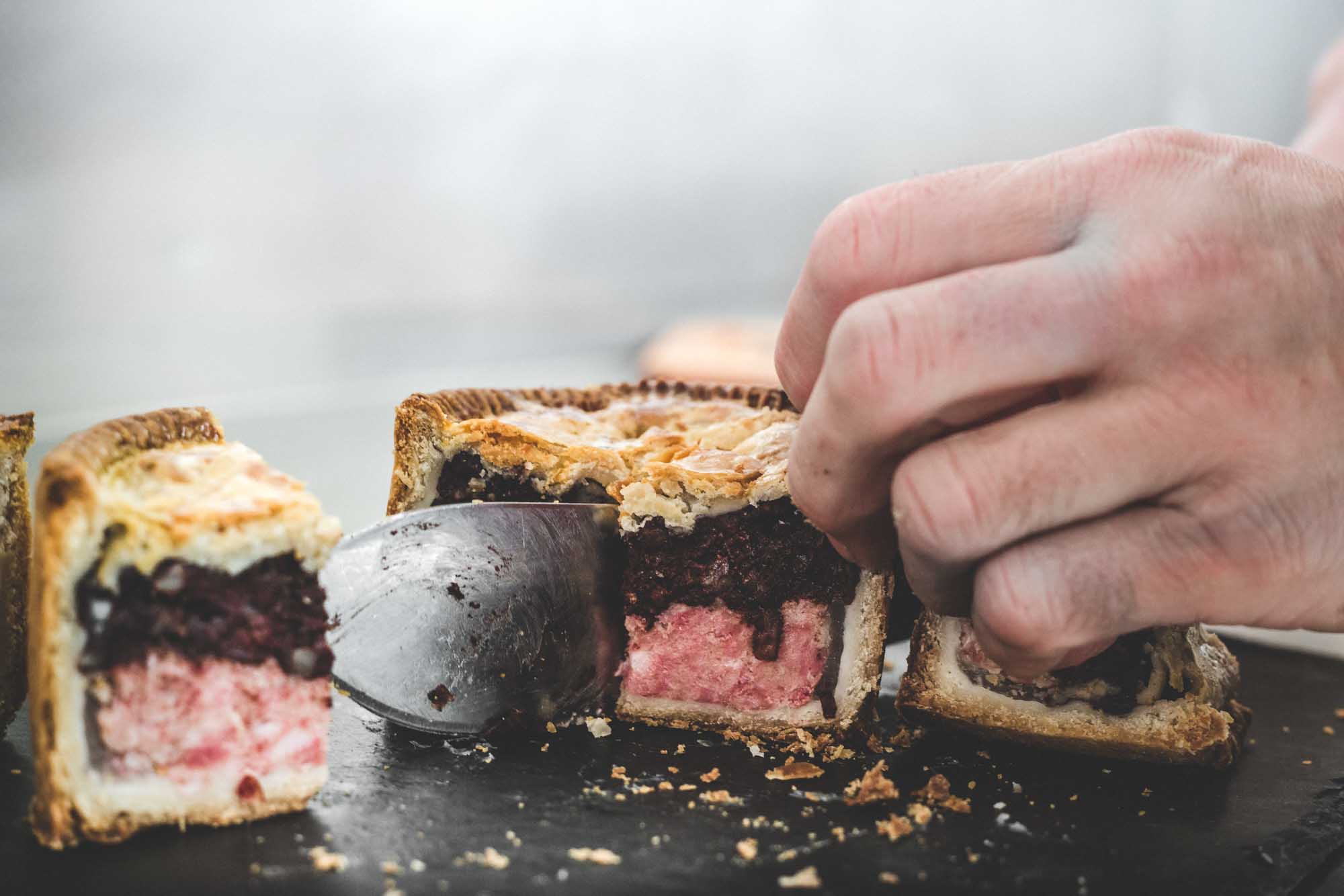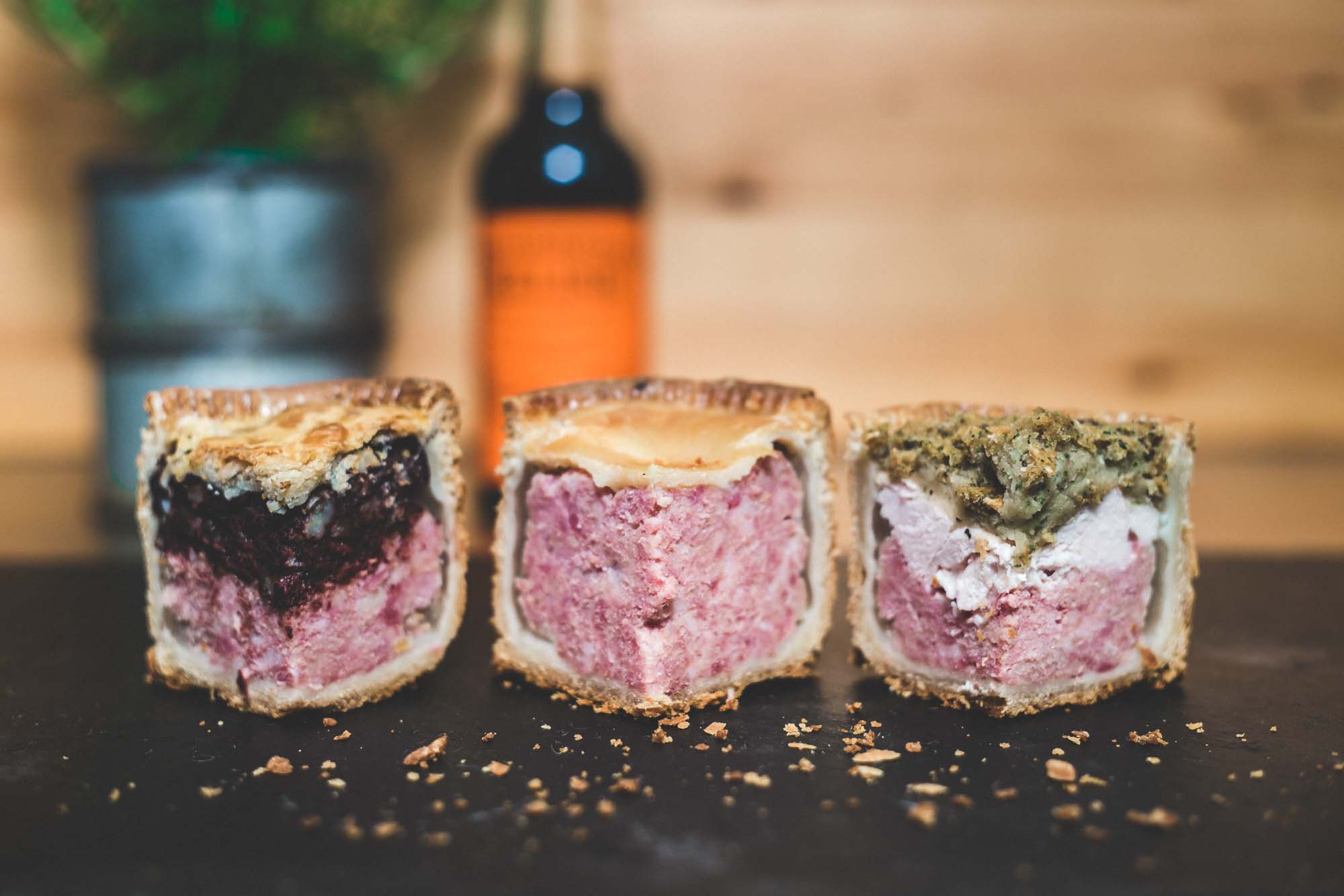Not long now until British Pie Week 2017… and we thought it would be a good time to share this article after all a whole week devoted to pies. What’s not to love?
Technically, everything used to be a pie
Originally, the pie’s pastry shell was designed to be used as a baking dish, storage container, and a way to serve the filling. Records show that Romans would use meats, oysters, mussels and fish as the filling and a mixture of flour, oil and water to keep it all in place. The pastry was often tough and inedible and was designed to be thrown away.
Some historians suggest it was given to the servants while the rich ate the contents.
Someone once paid over £1,000 for a single slice
The Guinness World Record for the most expensive meat pie ever sold goes to the Fence Gate Inn in Lancashire which sold its pie for £8195 – or £1024 a slice – to eight guests on November 14, 2005.
It was made from £500 worth of Japanese wagyu beef fillet, Chinese matsutake mushrooms (which are so precious, they’re harvested under guard), Winter Black truffles, French Bluefoot mushrooms (sold at £200 for 1kg), gravy made from two bottles of vintage 1982 Chateau Mouton Rothschild wine, topped with edible gold leaf.

Shakespeare has killed off two characters with pie
A recent study compiled all of Shakespeare’s 74 scripted deaths throughout his 38 plays. Among them are stabbings (30), poisonings (four), be-headings (three), and two poor souls had the most creative death of all: they were baked into a pie.
In Titus Andronicus (Shakespeare’s first tragedy), Titus Andronicus wreaks revenge on Queen Tamora and her family for their evil deeds by baking her sons into a pie and serving it to her.
There’s a world-famous pie-eating contest in the UK
Held at Harry’s Bar in Wigan, the annual World Pie Eating Championship has been going since 1992. Originally, contestants had to attempt to eat as many pies as possible within the given time limit, but this was changed in 2006 – in order to meet government healthy eating guidelines – to a race in which competitors vie to eat a single pie in the least amount of time.
There has been some controversy over the last 24 years though: in 2005, pies were imported from from nearby Farnworth in Bolton, while local Wigan pies were sidelined as they were believed to be “sub-standard”. This resulted in a four-man strong protest. The same thing happened again in 2009 when the pies were imported from Adlington.
The real-life Sweeney Todds
The tale of Sweeney Todd and Mrs Lovett, the murderous duo who baked their victims in pies and then sold them, might be fictional, but it appears people have been taking inspiration from it in real life.
In 2010, a Russian chef was arrested on suspicion of killing his father-in-law, and serving his remains in pies to customers in a popular cafe for three days before anyone realised.

Pickle and Peanut Butter pie exists. Sadly
There are a lot of strange pie flavours out there and the annual Strange Pie Contest in California aims to create even more.
The aim of the event is for the general public to submit their “freakiest, oddest, most non-traditional, (and yet still delicious) pie“, and is responsible for wonders such as the ‘Pickle and Peanut Butter pie’, ‘The Club pie’ (that’s French fries, bacon, and mayonnaise), and the ‘Candied Peppers and Chocolate pie’.
Pie used to be illegal
Sort of. In 1644, Oliver Cromwell banned pie as he decided it was a “pagan form of pleasure”. It wasn’t a complete and utter ban on pies, though – just a ban on Christmas celebrations and foods that were associated with the “pagan” holiday, such as mince pies, turkey, and Christmas ale.
The ban was eventually lifted in 1660.
People send eel pie to the royal family every jubilee or coronation
It’s one of those painfully British traditions that just wouldn’t make sense anywhere else. For every jubilee or coronation the people of Gloucester send pie to the Royal household made from lampreys, a locally sourced eel-like fish.
The odd tradition dates back to the Middle Ages, when lamprey was considered a treat. It used to be so popular, King Henry I was rumoured to have died of food poisoning in 1135, thanks to his eating “a surfeit of lampreys”. Even Samuel Pepys mentioned them in his diaries, calling them a favourite of “medieval epicures”.
The rich used to put live animals in their pies
In 16th century England “surprise pies” where live animals would jump out when the pie was cut open were strangely popular among the upper class.
All kinds of creatures could be placed inside the pies, including frogs, squirrels, foxes and, as one nursery rhyme says, “four-and-twenty blackbirds.” Some records even suggest that at a dinner attended by Charles I, a huge pie was placed on the table and when the crust was removed, a dwarf jumped out from the pie.
The British take their pies very seriously
Last year, the ‘Make wrongly describing a casserole with a pastry lid as a pie a criminal offence‘ petition earned 5,687 signatures arguing that a ‘pie’ with a puff pastry lid is not actually a pie, and is a casserole instead: “For too long customers in pubs and restaurants have ordered what is described on the menu as a pie only to be served with casserole in a pot covered by a puff pastry lid. This is not a pie and is also curiously difficult to consume.
“A pie is defined by the OED as “A baked dish of fruit, or meat and vegetables, typically with a top and base of pastry.” This petition urges the implementation of criminal sanctions upon the owners of food outlets that serve items described as pies without a pastry base.”







